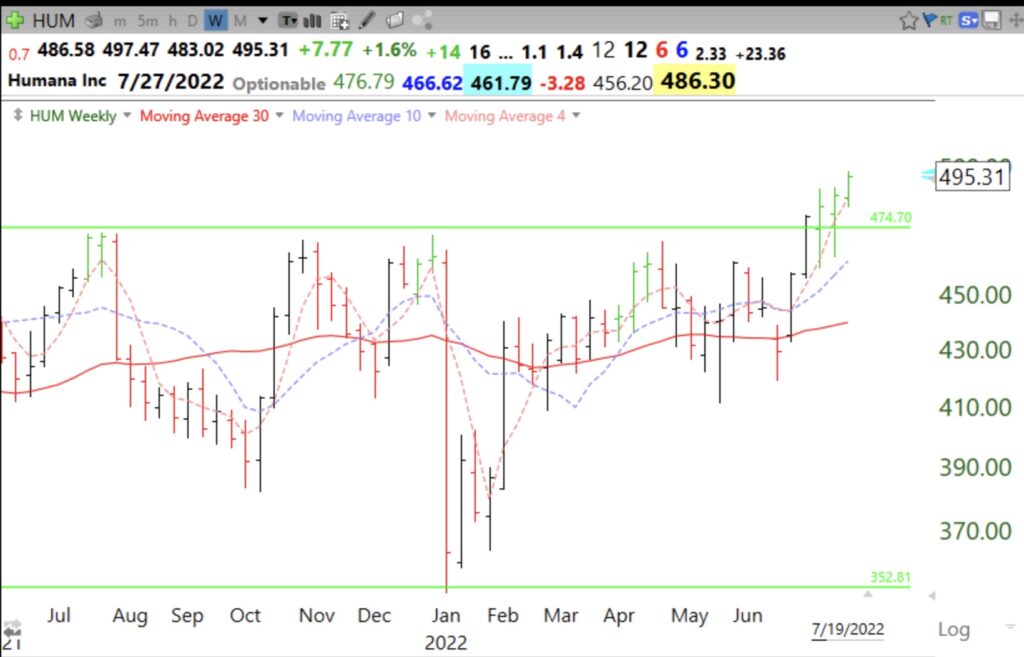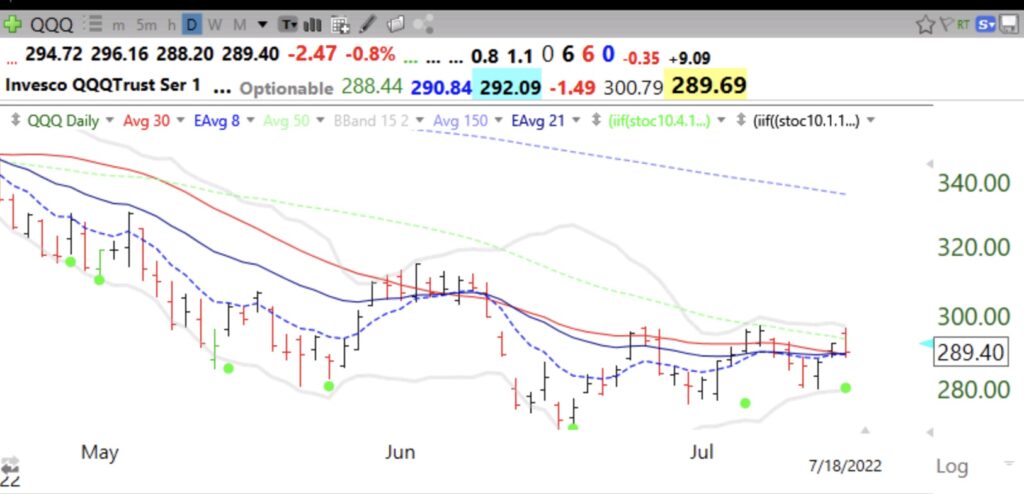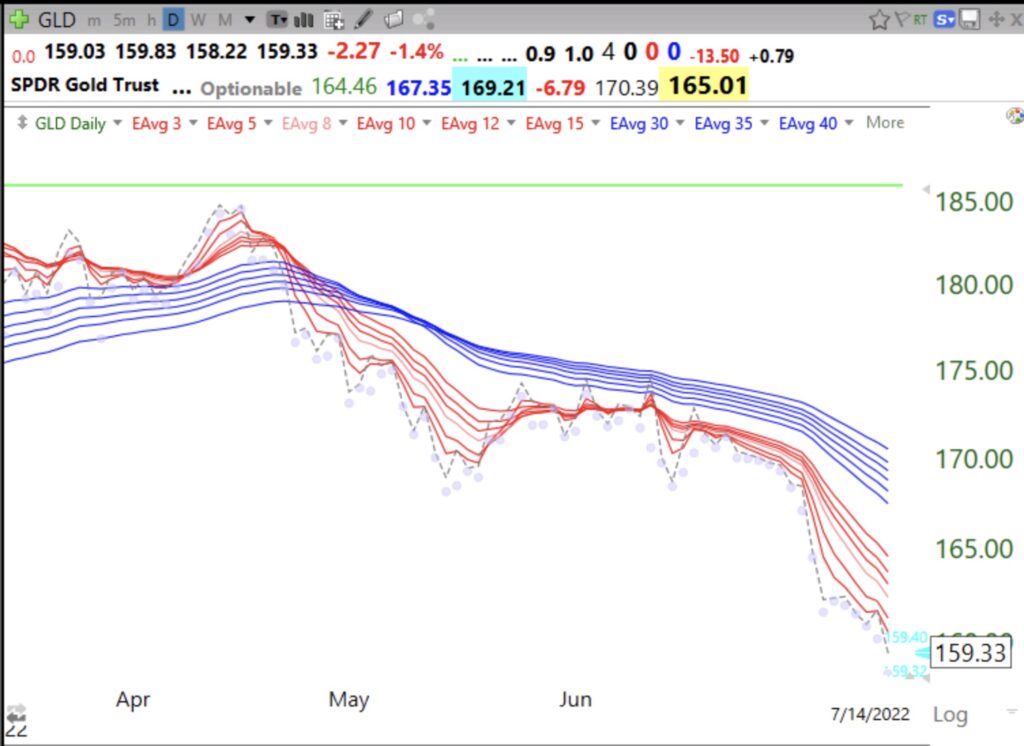Here is the weekly chart of HUM. Note the three green bars in a row, indicating bounces up off of the rising 4 week average. A weekly close below the 4 week average (red dotted line) would be a sign of weakness.
All Posts
Blog post: $QQQ short term trend indicator turns up again–market is in a flat channel; Get link to my TraderLion conference presentation
I have rarely seen such a back and forth in my QQQ short term trend indicator. The market is clearly going sideways. I am 99% in cash in my trading account and 100% cash in my university pension accounts. Will the June bottom hold? No one knows!
I enjoyed presenting at the great 2022 TraderLion conference this weekend. The 4 days of presentations are now available at their Youtube site. Here is day 3. I am on about half way through Day 3 , after John Boik. Thank you to all who attended live. I greatly enjoyed the experience and hope you got some value out of it.


